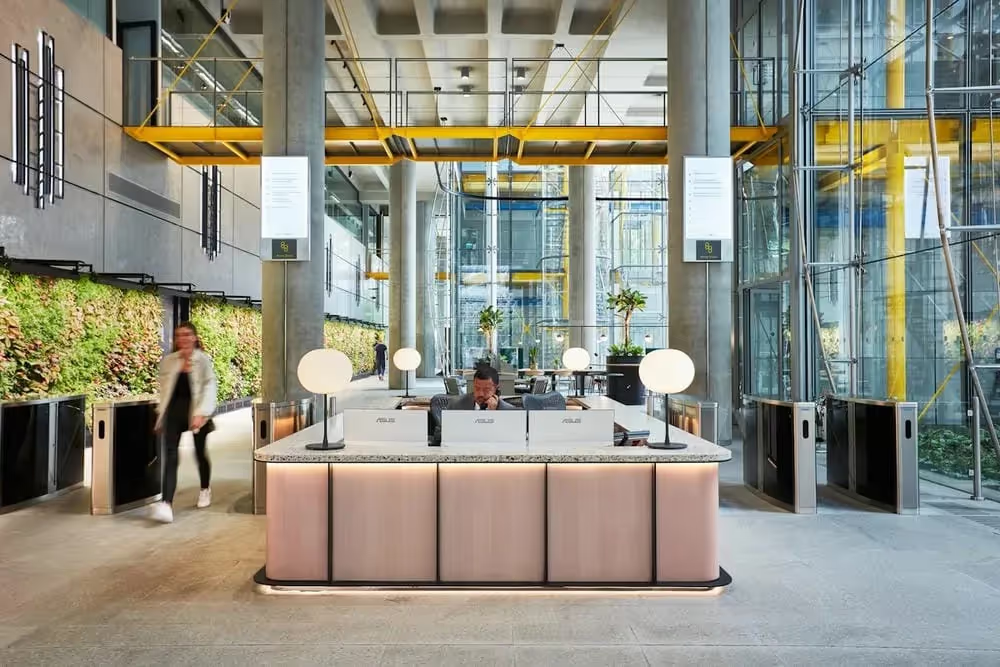Climate-Adaptive Living Wall Plant Selection: Thriving in Harsh Conditions

Living walls, with their lush vertical gardens, bring a touch of nature to urban environments and architectural design. These green installations offer numerous benefits, from improved air quality to aesthetic beauty. However, to ensure the longevity and vitality of your living wall, selecting plants that can withstand harsh climate conditions is essential.
Understanding Your Local Climate
Before diving into plant selection, it's crucial to understand your local climate. Different regions experience varying temperature ranges, humidity levels, and sunlight exposure. By comprehending your area's climate, you can make informed choices about which plants are most likely to thrive.
For example, the UK climate is characterised by its moderate temperatures, high humidity, and relatively consistent rainfall throughout the year. Selecting plants that can thrive in this temperate maritime climate requires careful consideration of factors like temperature, precipitation, and sunlight.
Choosing Climate-Adaptive Plants for Your Living Wall
When it comes to climate-adaptive plants, the following categories can guide your selection process:
- Drought-Tolerant Plants: In arid or semi-arid regions with limited rainfall, selecting drought-tolerant plants is essential. Succulents like Sedum and Sempervivum are popular choices for their water-saving abilities.
- Cold-Hardy Plants: For colder climates with harsh winters, opt for cold-hardy plants like some varieties of ferns, mosses, and hardy evergreens.
- Heat-Resistant Plants: In scorching hot climates, select heat-resistant plants that can handle intense sunlight and high temperatures. Options include ornamental grasses and some flowering perennials.
- Native Plants: Native plants are often naturally adapted to the local climate and can be an excellent choice for living walls. They can attract local wildlife and contribute to regional biodiversity.
- Shade-Tolerant Plants: If your living wall receives limited direct sunlight, opt for shade-tolerant plants, such as ferns, hostas, or certain types of ivy.
- Air-Purifying Plants: Some plants, like snake plants and pothos, are known for their air-purifying qualities and can help improve indoor air quality
Plant Combinations for Resilience
To create a dynamic and climate-resilient living wall, consider combining different plant species. This not only adds visual interest but also improves your living wall's ability to adapt to changing conditions.
Here are some plant combination ideas:
- Drought-Tolerant Mix: Combine drought-resistant Sedum varieties with heat-resistant ornamental grasses for a hardy and low-maintenance living wall.
- Shady Elegance: In shady locations, pair ferns and hostas with shade-tolerant perennials like begonias or impatiens for a lush and cool living wall.
- Mixed Native Garden: Incorporate a mix of native plants to support local ecosystems, attract pollinators, and enhance biodiversity.
- Year-Round Greenery: Incorporate evergreen species like ivy, Euonymus fortunei, and ferns to ensure your living wall remains vibrant throughout the year.
- Succulent Variety: Mix hardy sedums and succulents for a low-maintenance living wall that can withstand numerous climate challenges.
Maintenance Tips for Your Living Wall
Proper maintenance is crucial for climate-adaptive living walls. Here are some essential maintenance tips:
Regular Pruning
Keep plants in check by pruning and trimming as needed, especially those that grow quickly.
Adequate Watering
Adjust your watering schedule according to the local climate. In hot and dry conditions, you might need to water more frequently, whereas cooler climates require less water.
Fertilisation
Apply appropriate fertilizers to ensure your plants receive essential nutrients for healthy growth.
Pest and Disease Management
Monitor your living wall for pests and diseases and take proactive measures to prevent infestations.
Book a Consultation with Viritopia
Creating a climate-adaptive living wall is about choosing the right plants and understanding your local conditions. Are you interested in learning more about living walls? Are you in the early stages of development? Then look no further. Our team at Viritopia has you covered.
Viritopia has over 20 years of experience designing and maintaining biophilic infrastructure to create a detailed analysis of how a scheme will meet regulatory requirements. We help with a faster planning process and provide you with what’s needed to take your project to the next level. Head to our site to book a living wall consultancy or explore more about our green walls and their benefits.
Explore more insights
Discover the latest in green infrastructure

Vanguard Logistics Park (Longmore) Featured in RIBA Commercial Directory 2025

Green Roof Advantages & Disadvantages

Design with meaning: How office living walls reflect your brand

